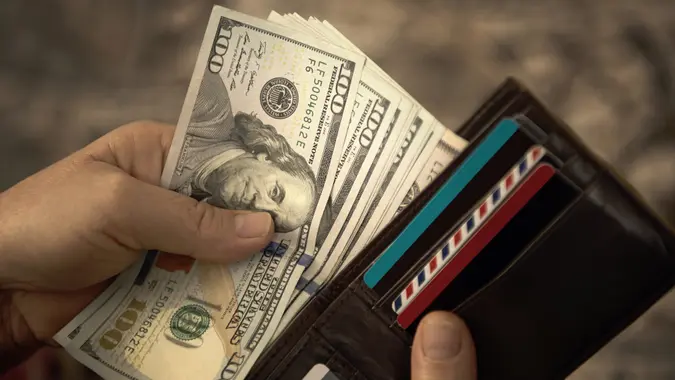Using CDs to Build Your Emergency Fund: Tips and Strategies

Commitment to Our Readers
GOBankingRates' editorial team is committed to bringing you unbiased reviews and information. We use data-driven methodologies to evaluate financial products and services - our reviews and ratings are not influenced by advertisers. You can read more about our editorial guidelines and our products and services review methodology.

20 Years
Helping You Live Richer

Reviewed
by Experts

Trusted by
Millions of Readers
Building an emergency fund is a crucial aspect of financial planning. It provides a safety net during unexpected circumstances, such as a medical emergency or job loss. While traditional savings accounts are commonly used for emergency funds, another viable option to consider is utilizing Certificates of Deposit (CDs).
Learn: Why Stealth Wealth Is the Best Way To Handle Your MoneyMore: How To Build Your Savings From Scratch
CDs offer a unique opportunity to grow your emergency fund while maintaining its accessibility and security. In this article, we will explore tips and strategies for using CDs to build and optimize your emergency fund.
Understanding CDs and Their Benefits for Emergency Funds
Certificates of Deposit (CDs) are financial instruments that allow you to deposit a fixed sum of money for a specific term and earn a predetermined interest rate. They offer several benefits when used for emergency funds.
Firstly, CDs provide higher interest rates compared to standard savings accounts, allowing your emergency fund to grow at a faster pace.
Secondly, CDs are insured by the Federal Deposit Insurance Corporation (FDIC) or the National Credit Union Administration (NCUA), providing an extra layer of protection for your funds.
Assessing Your Emergency Fund Needs
Before determining the allocation of your emergency fund into CDs, it’s essential to assess your specific needs. Consider factors such as your monthly expenses, dependents, and job stability.
It is advised by financial specialists that an individual should have a financial cushion of three to six months of their usual living expenses stored away for contingencies.
However, individuals with more unpredictable incomes or specialized professions may benefit from saving even more. Evaluate your circumstances to determine an appropriate target for your emergency fund.
Utilizing CD Laddering for Flexibility and Accessibility
CD laddering is a strategy that allows you to maintain both accessibility and potential higher interest rates. Instead of depositing the entire emergency fund into a single CD, you divide it into smaller portions and invest them in CDs with different maturity dates. For example, you might have one-third of your emergency fund in a three-month CD, one-third in a six-month CD, and one-third in a nine
Considering No-Penalty CDs for Flexibility
No-penalty CDs are another option to consider when building your emergency fund. These CDs offer the advantage of liquidity, allowing you to withdraw your funds without incurring penalties before the maturity date.
While the interest rates for no-penalty CDs might be slightly lower than those of traditional CDs, the flexibility they provide can be valuable in emergency situations where quick access to funds is crucial. Including a portion of your emergency fund in no-penalty CDs can provide a balance between earning interest and maintaining liquidity.
Take Our Poll: Are You Concerned About the Safety of Your Money in Your Bank Accounts?I’m a Financial Advisor: These Are the Worst Money Mistakes I See People Make
Creating a well-thought-out plan and investing in certificates of deposit can help create an emergency fund that can bring a sense of security and peace of mind during unexpected events.
More From GOBankingRates
The article above was refined via automated technology and then fine-tuned and verified for accuracy by a member of our editorial team.
 Written by
Written by  Edited by
Edited by 

























